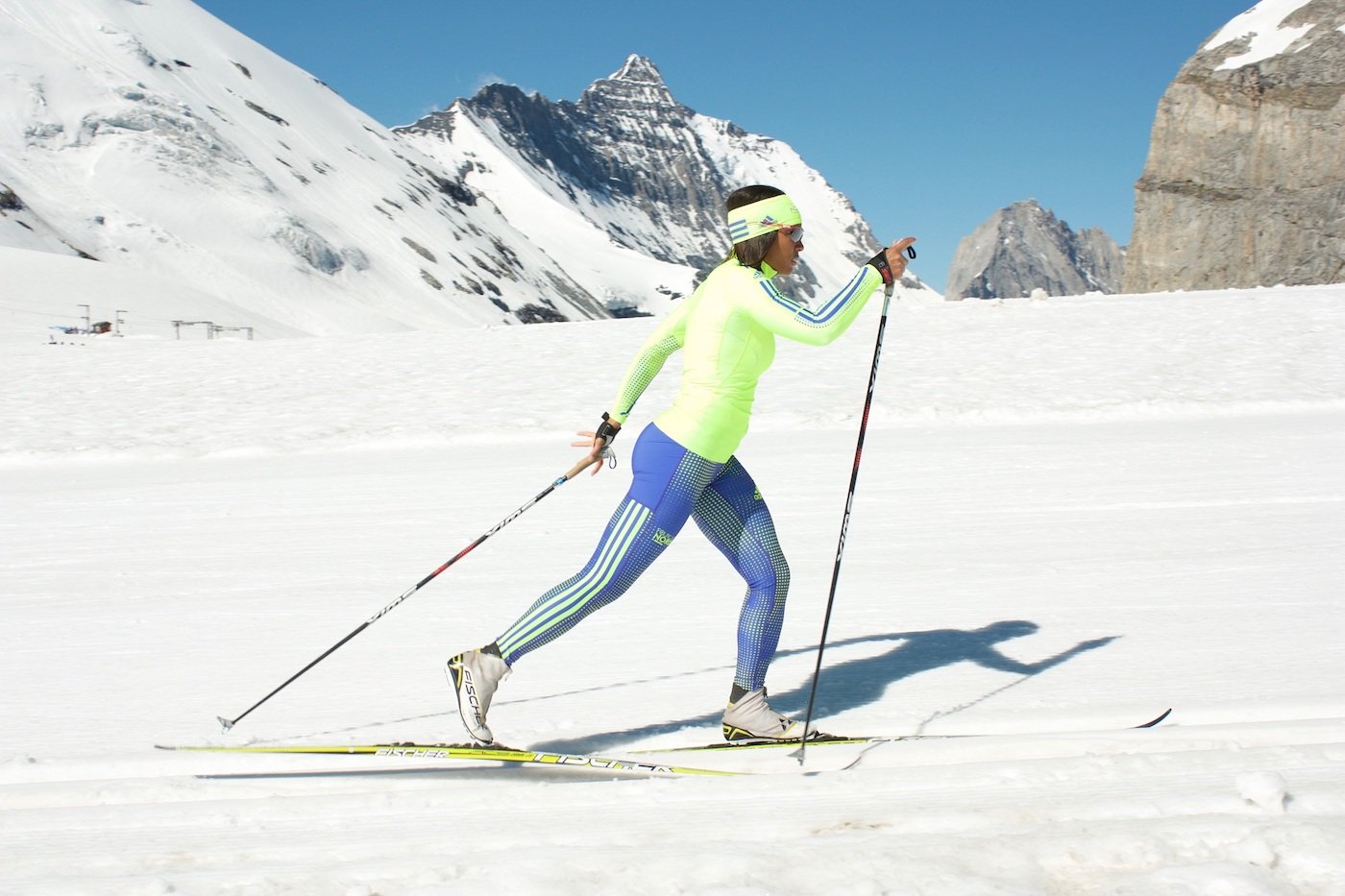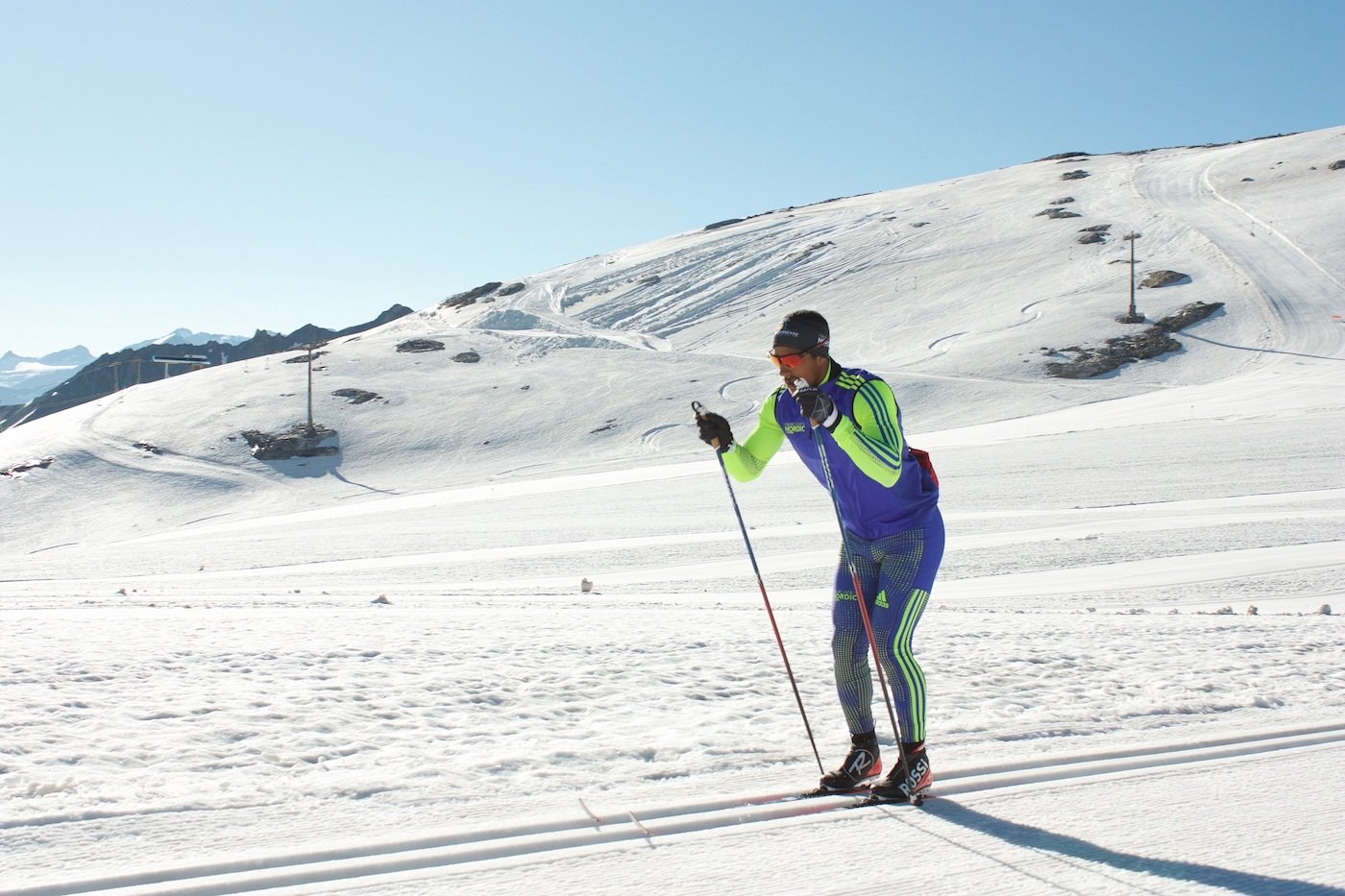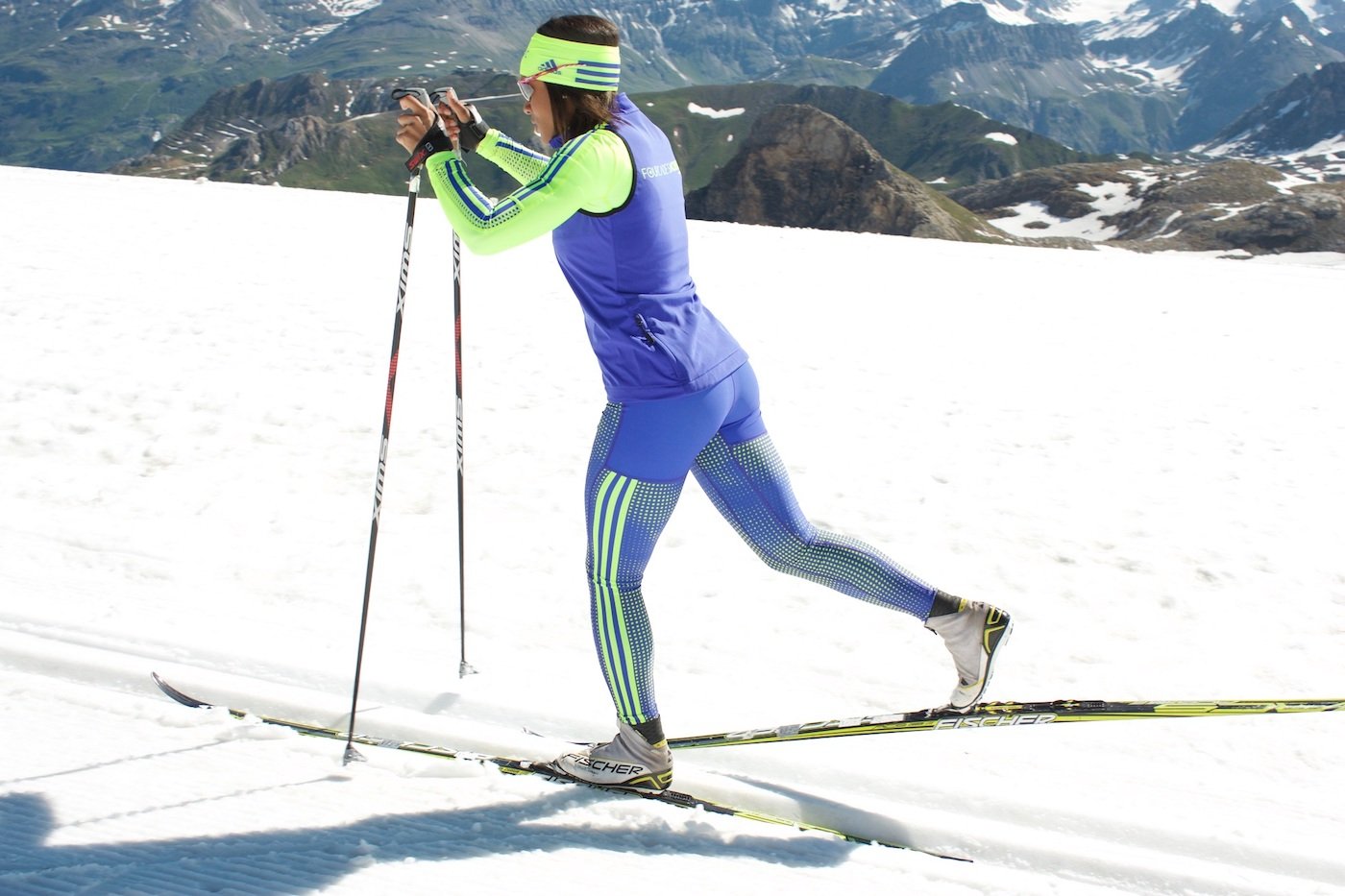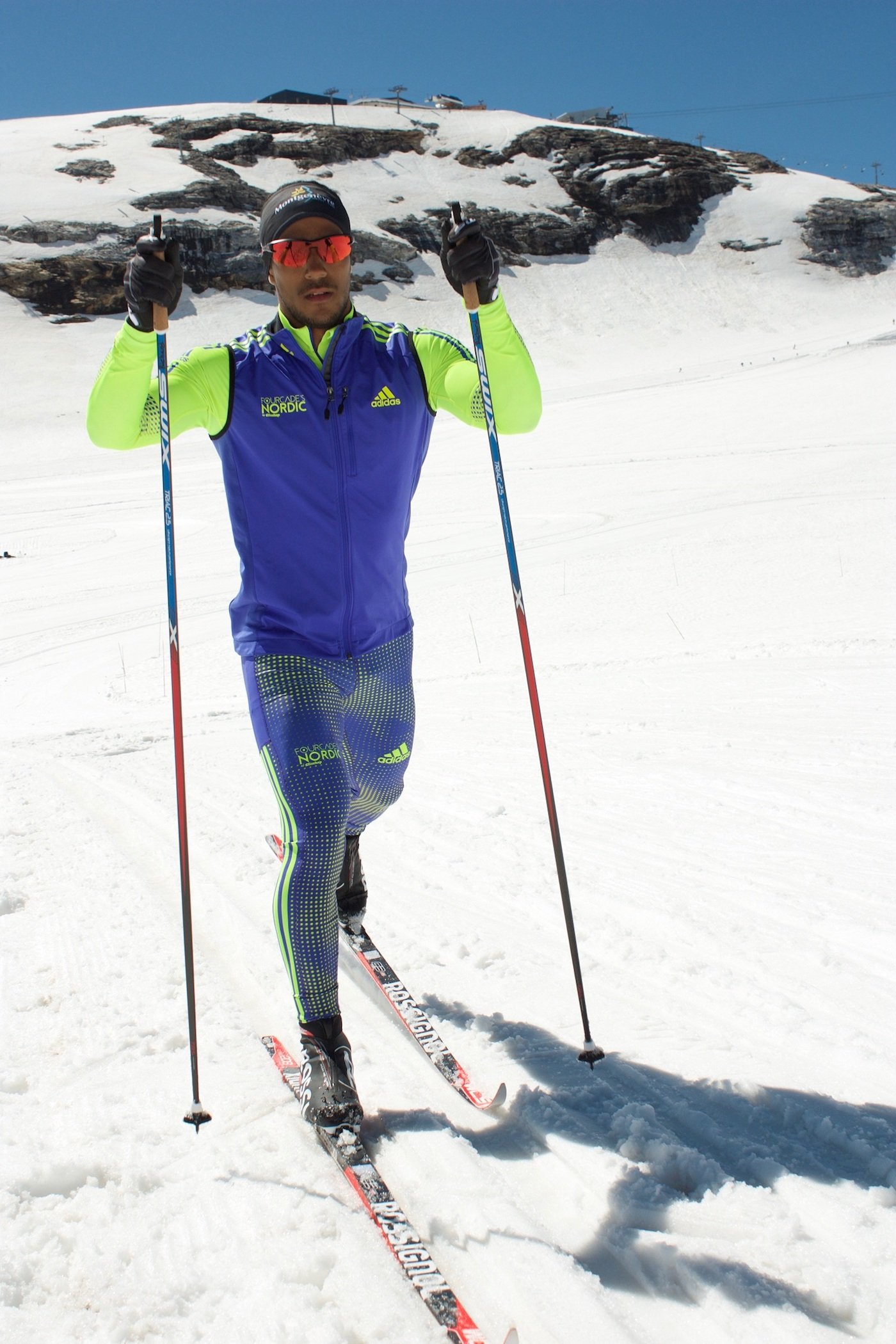It is the basic of cross-country skiing, the technique with which everything began. Pretty easy to do for beginners because it is quite similar to the walking motion, it allows inexperienced skiers to feel technically and physically comfortable at skiing. The classic was used in nordic countries for centuries, it allowed people to travel long distances at a slow pace or was even used for hunting. Only recently this specific technique went through major evolutions due to the emergence of competitions during the 20th century. The technique is easy when you do it slowly at walking pace, but it gets a lot more complicated when the rythm increases. Gestures have to be extremely precise for optimising gliding phases. It is generally said that it takes about three years to master the skating technique and ten years for the classic one.
Check out our selection of classic cross-country skis now!
Classic or diagonal stride

This is the most common stride used in the classic technique, the alternative step or diagonal stride looks exactly like the walking motion where you will add the glide. It consists in pushing arm/leg diagonally like the walking motion but with poles, the arms exercise a traction while the leg exercises a propulsion.
It is simpler to do at low speed and for cross-country, when you want to extend the glide phase it becomes way more technical.
It is the basic step of cross-country skiing, the less energy hungry but the hardest to master in race, you have to modify the walk motion to get maximum glide and speed on technical terrains.

Glisshop tutorial: Classic technique, diagonal stride
Double Poling

It is the most popular move on flat terrains in the classic technique.
As the name says, the double-poling technique consists in pushing simultaneously on the two poles without using the legs. Until now it was reserved to the flat sections of the track, but since a few years the trend is to start a race with classic unwaxed skis or even skating skis and run the entire race with the only strength of the arms.
The technique is a basic technique of classic cross-country skiing but it won’t be doable on every terrain, when the uphill is too steep is it impossible to only use your arms.
This year came up the first “double-poling” ski made by Fischer, a classic ski designed be pushed exclusively by the poles.
This trend goes with the evolution of the sport, it may not be the most beautiful technique compared to a graceful classic step, but it can be extremely effective if you have the skills it requires.

Glisshop tutorial: Classic technique, double poling
One-step double-poling

The step used on flat sections or on gentle uphills if the glide becomes difficult, this technique mixes the classic diagonal stride and the double-poling.
It consists in pushing simultaneously on both poles while you do a leg-push, ideally you alternate the leg every time you push. Usually this technique is used by expert skiers because it requires a great technique, coordination and a minimum glide.

Glisshop tutorial: Classic technique, One-step double-poling
The two-step double-poling

The less common technique in classic skiing, not to say that it doesn’t exist anymore. This technique consists in two leg-pushes, like for the diagonal stride, and a double-poling on the second leg-push.
It is a rare step but really technical, it requires a great balance to hold and propulse the second leg without using your arm.
It is a step you can use on the flat sections or gentle uphills instead of doing the diagonal stride.
The Diagonal V Stride
The Diagonal V Stride or alternative stride is useful when you lack of grip on steep uphill sections.

Glisshop Tutorial: Classic technique The Diagonal V Stride
The Diagonal Stride Without Poles
The Diagonal Stride Without Poles is a great training exercise for improving your position and balance on low-gradient climbs.

Glisshop tutorial: The Diagonal Stride Without Poles
Diagonal Stride With One Pole
The Diagonal Stride With One Pole is an exercise that helps you working on your abdominal and back muscles and on the precision of your gestures.

Glisshop tutorial: Diagonal Stride With One Pole
